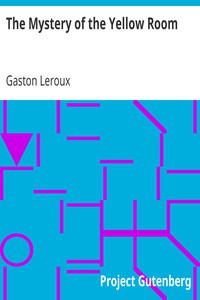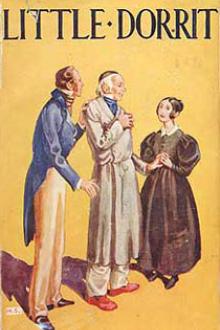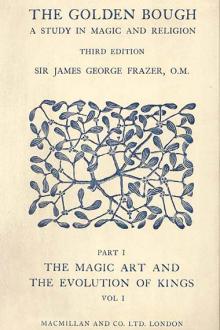The Mystery of the Yellow Room, Gaston Leroux [dar e dil novel online reading TXT] 📗

- Author: Gaston Leroux
Book online «The Mystery of the Yellow Room, Gaston Leroux [dar e dil novel online reading TXT] 📗». Author Gaston Leroux
Rouletabille paused. We all remained silent. Each drew his own conclusions from the strange story of the poste restante letter. It seemed, indeed, that we now had a thread by means of which we should be able to follow up this extraordinary mystery.
“Then it is almost certain,” said Monsieur Stangerson, “that my daughter did lose the key, and that she did not tell me of it, wishing to spare any anxiety, and that she begged whoever had found it to write to the poste restante. She evidently feared that, by giving our address, inquiries would have resulted that would have apprised me of the loss of the key. It was quite logical, quite natural for her to have taken that course—for I have been robbed once before.”
“Where was that, and when?” asked the Chief of the Surete.
“Oh! many years ago, in America, in Philadelphia. There were stolen from my laboratory the drawings of two inventions that might have made the fortune of a man. Not only have I never learnt who the thief was, but I have never heard even a word of the object of the robbery, doubtless because, in order to defeat the plans of the person who had robbed me, I myself brought these two inventions before the public, and so rendered the robbery of no avail. From that time on I have been very careful to shut myself in when I am at work. The bars to these windows, the lonely situation of this pavilion, this cabinet, which I had specially constructed, this special lock, this unique key, all are precautions against fears inspired by a sad experience.”
“Most interesting!” remarked Monsieur Dax.
Monsieur Rouletabille asked about the reticule. Neither Monsieur Stangerson nor Daddy Jacques had seen it for several days, but a few hours later we learned from Mademoiselle Stangerson herself that the reticule had either been stolen from her, or she had lost it. She further corroborated all that had passed just as her father had stated. She had gone to the poste restante and, on the 23rd of October, had received a letter which, she affirmed, contained nothing but a vulgar pleasantry, which she had immediately burned.
To return to our examination, or rather to our conversation. I must state that the Chief of the Surete having inquired of Monsieur Stangerson under what conditions his daughter had gone to Paris on the 20th of October, we learned that Monsieur Robert Darzac had accompanied her, and Darzac had not been again seen at the chateau from that time to the day after the crime had been committed. The fact that Monsieur Darzac was with her in the Grands Magasins de la Louvre when the reticule disappeared could not pass unnoticed, and, it must be said, strongly awakened our interest.
This conversation between magistrates, accused, victim, witnesses and journalist, was coming to a close when quite a theatrical sensation—an incident of a kind displeasing to Monsieur de Marquet—was produced. The officer of the gendarmes came to announce that Frederic Larsan requested to be admitted,—a request that was at once complied with. He held in his hand a heavy pair of muddy boots, which he threw on the pavement of the laboratory.
“Here,” he said, “are the boots worn by the murderer. Do you recognise them, Daddy Jacques?”
Daddy Jacques bent over them and, stupefied, recognised a pair of old boots which he had, some time back, thrown into a corner of his attic. He was so taken aback that he could not hide his agitation.
Then pointing to the handkerchief in the old man’s hand, Frederic Larsan said:
“That’s a handkerchief astonishingly like the one found in The Yellow Room.”
“I know,” said Daddy Jacques, trembling, “they are almost alike.”
“And then,” continued Frederic Larsan, “the old Basque cap also found in “The Yellow Room” might at one time have been worn by Daddy Jacques himself. All this, gentlemen, proves, I think, that the murderer wished to disguise his real personality. He did it in a very clumsy way—or, at least, so it appears to us. Don’t be alarmed, Daddy Jacques; we are quite sure that you were not the murderer; you never left the side of Monsieur Stangerson. But if Monsieur Stangerson had not been working that night and had gone back to the chateau after parting with his daughter, and Daddy Jacques had gone to sleep in his attic, no one would have doubted that he was the murderer. He owes his safety, therefore, to the tragedy having been enacted too soon,—the murderer, no doubt, from the silence in the laboratory, imagined that it was empty, and that the moment for action had come. The man who had been able to introduce himself here so mysteriously and to leave so many evidences against Daddy Jacques, was, there can be no doubt, familiar with the house. At what hour exactly he entered, whether in the afternoon or in the evening, I cannot say. One familiar with the proceedings and persons of this pavilion could choose his own time for entering “The Yellow Room”.”
“He could not have entered it if anybody had been in the laboratory,” said Monsieur de Marquet.
“How do we know that?” replied Larsan. “There was the dinner in the laboratory, the coming and going of the servants in attendance. There was a chemical experiment being carried on between ten and eleven o’clock, with Monsieur Stangerson, his daughter, and Daddy Jacques engaged at the furnace in a corner of the high chimney. Who can say that the murderer—an intimate!—a friend!—did not take advantage of that moment to slip into “The Yellow Room”, after having taken off his boots in the lavatory?”
“It is very improbable,” said Monsieur Stangerson.
“Doubtless—but it is not impossible. I assert nothing. As to the escape from the pavilion—that’s another thing, the most natural thing in the world.”
For a moment Frederic Larsan paused,—a moment that appeared to us a very long time. The eagerness with which we awaited what he was going to tell us may be imagined.
“I have not been in “The Yellow Room”,” he continued, “but I take it for granted that you have satisfied yourselves that he could have left the room only by way of the door; it is by the door, then, that the murderer made his way out. At what time? At the moment when it was most easy for him to do so; at the moment when it became most explainable—so completely explainable that there can be no other explanation. Let us go over the moments which followed after the crime had been committed. There was the first moment, when Monsieur Stangerson and Daddy Jacques were close to the door, ready to bar the way. There was the second moment, during which Daddy Jacques was absent and Monsieur Stangerson was left alone before the door. There was a third moment, when Monsieur Stangerson was joined by the concierge. There was a fourth moment, during which Monsieur Stangerson, the concierge and his wife and Daddy Jacques were before the door. There was a fifth moment, during which the door was burst open and “The Yellow Room” entered. The moment at which the flight is explainable is the very moment when there was the least number of persons before the door. There was one moment when there was but one person,—Monsieur Stangerson.





Comments (0)